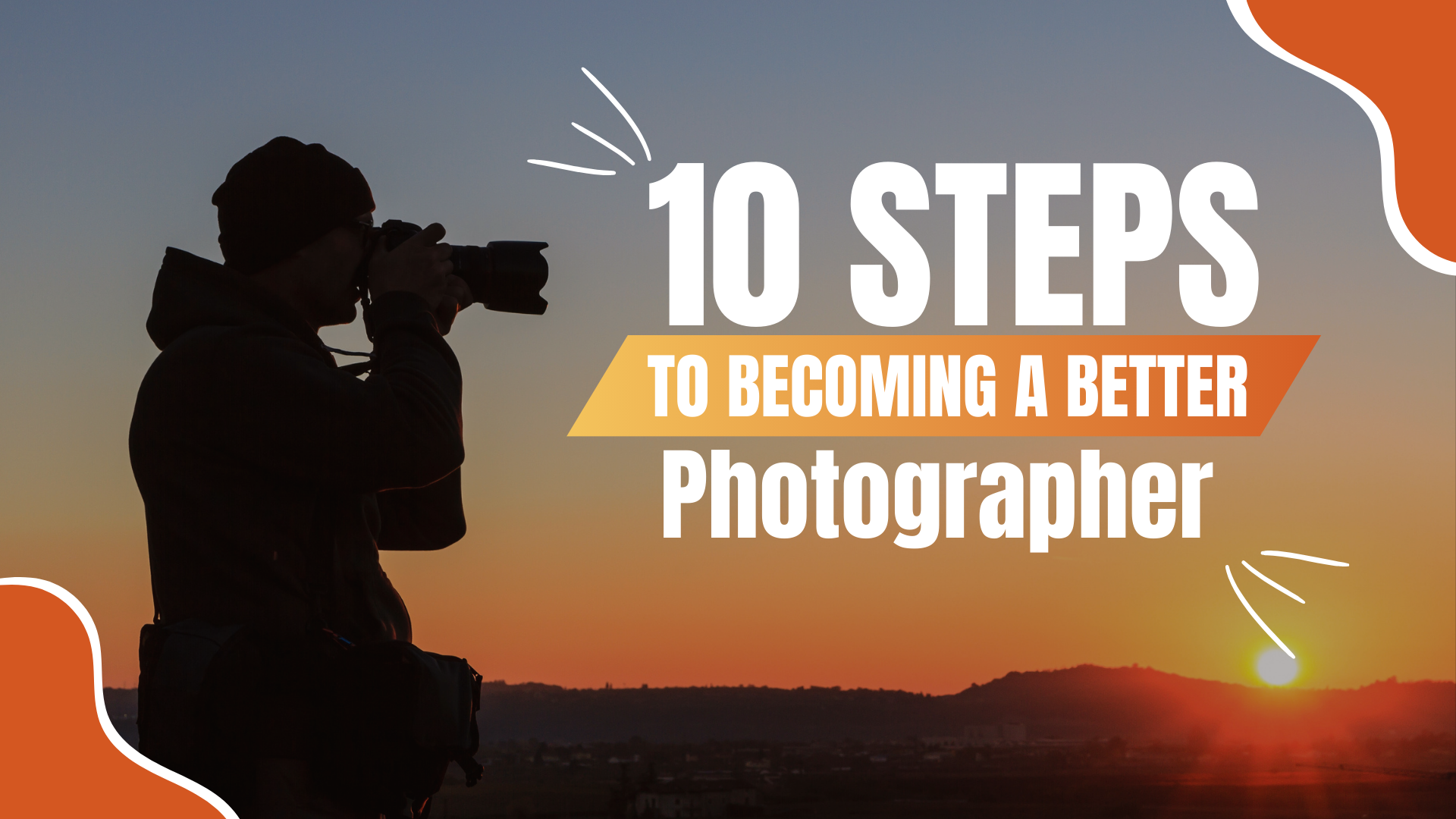Comprehensive Photography Guide is more than just taking pictures; it’s a powerful medium of expression, an art form, and a technical skill that requires continuous learning and creativity. Whether you’re a beginner looking to capture the world around you or a seasoned professional seeking to refine your craft, this comprehensive guide will explore the diverse facts of photography, from essential techniques to advanced topics and everything in between.
1. Photography Techniques
1.1 Composition
Composition is the foundation of captivating photography. It’s about arranging elements within your frame to create visually appealing images. Key composition techniques include the Rule of Thirds, which divides your frame into nine equal parts to help you position your subject, and Leading Lines, where you use lines or shapes to guide the viewer’s eye through the image.
1.2 Exposure
Understanding exposure is essential for achieving the right balance of light and shadow in your photos. It involves three key elements:
- Aperture: This controls the size of the lens opening. A wider aperture (small f-number) results in a shallow depth of field, while a narrower aperture (higher f-number) deepens it.
- Shutter Speed: This determines how long the camera’s sensor is exposed to light. Fast shutter speeds freeze action, while slow speeds create motion blur.
- ISO: ISO measures the sensitivity of your camera’s sensor to light. Lower ISO values are ideal for well-lit scenes, while higher values are used in low-light conditions.
1.3 Lighting
Photography is essentially the art of capturing light. Lighting can make or break your shot. You can work with natural light, which varies throughout the day, or experiment with artificial light, such as flash or studio lighting. Understanding different lighting techniques and their effects on your subjects is crucial for achieving the desired mood and atmosphere in your photos.
1.4 Focus
Focus determines what parts of your image will be sharp and what will be blurred. You can control focus through your camera’s settings, using techniques like depth of field to isolate subjects or create a sense of depth. Choosing between manual and auto-focus depends on your creative intentions.
1.5 Camera Gear
Selecting the right camera gear is vital for your photography journey. This includes your camera body, lenses, tripods, and various accessories. In-depth reviews and comparisons can help you make informed decisions about your equipment.
2. Photography Genres
Photography offers a multitude of genres, each with its unique challenges and opportunities. Here are some popular ones:
2.1 Landscape Photography
Landscape photography focuses on capturing the beauty of natural landscapes. Techniques include understanding weather conditions, scouting locations, and using filters to enhance skies and control reflections.
2.2 Portrait Photography
Portrait photography centers around people. It involves building a connection with your subjects, posing them effectively, and using lighting to flatter their features.
2.3 Macro Photography
Macro photography takes you into the tiny world of small subjects. It requires specialized lenses and techniques to capture intricate details up close.
2.4 Street Photography
Street photography is about capturing candid moments in public spaces. It involves keen observation and a knack for telling stories through everyday scenes.
2.5 Wildlife Photography
Wildlife photography demands patience and an understanding of animal behavior. It often requires long lenses and the ability to blend into the environment.
3. Editing and Post-Processing
While capturing a great photo is important, the editing and post-processing stage can elevate your images to the next level. Key aspects include:
3.1 Software
Photo editing software like Adobe Photoshop and Lightroom are industry standards. They offer a wide range of tools for enhancing, retouching, and creatively manipulating your photos.
3.2 Color Correction
Adjusting colors in post-processing can correct white balance issues, enhance color vibrancy, or create specific moods by altering the color palette of your images.
3.3 Retouching
Retouching involves removing imperfections, such as blemishes, and enhancing the overall appearance of your subjects while maintaining a natural look.
3.4 HDR Photography
High Dynamic Range (HDR) techniques combine multiple exposures of the same scene to capture a wider range of light and shadow. HDR can result in stunning, well-balanced images.
3.5 Black and White Photography
Creating compelling black and white images is an art form in itself. Post-processing can help you control contrast and tones to achieve impactful monochrome results.
4. Photography Gear and Accessories
Your choice of photography gear and accessories can significantly influence your work. Here’s what you need to know:
4.1 Cameras
Cameras come in various types, from compact point-and-shoots to professional DSLRs and mirrorless cameras. The right choice depends on your budget and specific photography interests.
4.2 Lenses
Lenses come in different focal lengths and apertures, each suited for particular photography styles. Understanding lens specifications is crucial for achieving the desired results.
4.3 Tripods and Supports
A tripod provides stability for long exposures and helps maintain sharpness in your photos. Other supports like gimbals and stabilizers can aid in video and action photography.
4.4 Filters
Filters like polarizers and ND (Neutral Density) filters can enhance your images by reducing reflections, controlling light, and allowing for longer exposures.
4.5 Bags and Storage
Keeping your gear organized and protected is essential. Invest in a reliable camera bag and backup storage solutions to safeguard your precious photos.
5. Photography Business and Marketing
If you aspire to turn your passion into a profession, consider these aspects of photography business and marketing:
5.1 Starting a Photography Business
Learn the fundamentals of starting a photography business, including legal requirements, business plans, and pricing strategies.
5.2 Marketing Your Photography
It is advisable to make your portfolio and resume with a number of video editors included to let the viewers know what you are going to use.
5.3 Licensing and Copyright
Understand the importance of protecting your intellectual property through proper licensing and copyright practices.
5.4 Photography Pricing
Determine fair and competitive pricing for your services, considering factors like location, experience, and the type of photography you offer.
5.5 Client Management
Building and maintaining positive client relationships is essential for a successful photography business. Communication and professionalism are key.
6. Photography Inspiration and Projects
Staying inspired and engaged in photography often involves taking on photography projects. Here are some ideas:
6.1 Photo Projects
Consider embarking on themed projects such as “365 Days of Photography,” “A Year of Portraits,” or “The Changing Seasons.” Projects provide structure and motivation for your photography.
6.2 Photography Challenges
Participating in online or community photography challenges can push your creative boundaries and encourage experimentation.
6.3 Photography Books
Explore the works of renowned photographers through photography books. Studying their techniques and styles can inspire your own photography.
6.4 Famous Photographers
Learn from the masters of photography, such as Ansel Adams, Annie Leibovitz, or Steve McCurry, by studying their iconic works and life stories.
6.5 Travel Photography
Capture the beauty and diversity of the world through travel photography. It’s an opportunity to document your adventures and share them with others.
7. Photography History and Art
Understanding the history and art of photography can deepen your appreciation of the medium:
7.1 Photography Movements
Learn about different photography movements like Pictorialism, Modernism, and Contemporary Photography, each with its own unique style and approach.
7.2 History of Photography
Explore the evolution of photography, from the early pinhole cameras to the digital age. Understanding historical context can enrich your photographic perspective.
7.3 Photography as Art
Photography is not just a craft; it’s a form of art. Delve into the artistic aspects of photography, including composition, storytelling, and creative expression.
7.4 Museum Exhibitions
Visit photography exhibitions in museums and galleries to experience the work of talented photographers and gain insights into their creative processes.
8. Photography Tips and Hacks
In addition to mastering the fundamentals, consider these photography tips and hacks:
8.1 Photography Hacks
Explore creative shortcuts and techniques that can save you time and help you achieve unique effects in your photos.
8.2 Photography Tips for Beginners
If you’re just starting out, here are some essential tips to help you build a strong foundation in photography.
8.3 Photography Tutorials
Step-by-step tutorials can guide you through various photography techniques, from setting up your camera to advanced post-processing.
8.4 Photography Apps
Discover mobile apps that can assist with photo editing, planning, and shooting, making photography more accessible on the go.
9. Photography Ethics and Social Issues
As a photographer, it’s crucial to consider ethics and social issues related to your work:
9.1 Ethical Photography
Respect your subjects’ consent and privacy when capturing their images. Understand the ethical responsibilities of photographing people, especially in sensitive situations.
9.2 Photojournalism
Explore the role of photography in journalism and the ethical challenges faced by photojournalists in documenting news events.
9.3 Environmental and Social Impact
Photography can raise awareness of important environmental and social issues. Use your skills to advocate for positive change.
9.4 Cultural Sensitivity
When photographing people from different cultures, be culturally sensitive and aim to represent them authentically and respectfully.
10. Photography Communities and Resources
Photography is a journey best shared. Connect with fellow photographers and access valuable resources:
10.1 Photography Forums
Participate in online photography communities and forums to seek advice, share your work, and learn from others.
10.2 Photography Workshops
Join workshops and photography classes to receive hands-on instruction, feedback, and the opportunity to collaborate with fellow photographers.
10.3 Photography Magazines and Blogs
Stay updated with the latest trends, gear reviews, and photography news by following photography magazines and blogs.
Conclusion
In conclusion, photography is a rich and multifaceted field that offers endless opportunities for creativity and self-expression. Whether you’re passionate about landscapes, portraits, or any other genre, mastering the essential techniques and exploring the diverse aspects of photography will help you grow as a photographer and capture moments that tell stories, evoke emotions, and inspire others. So, grab your camera, dive into the world of photography, and let your unique perspective shine through your lens.


